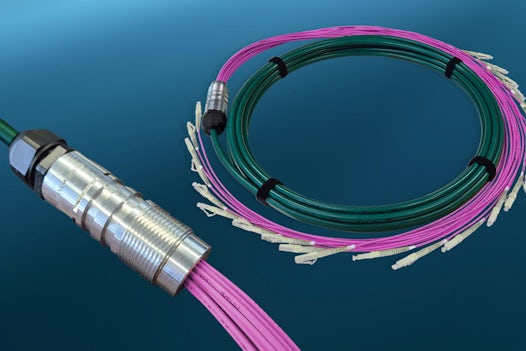
The digital future needs faster networks – now!
25 January 2021

In 2020 the pandemic brought home the pressing need for fast reliable data networks. Bandwidth requirement has been intensified mainly by home working, but also by multi-device usage and the increased use of streaming services and Cloud services. Back in March 2020 an increase of 20 to 30 percent in weekday Internet traffic was apparent – and at weekends this was even around 40 percent (LANline >). It would normally take an entire year for such growth to be achieved. Due to their higher resolution (UHD and 4K) video applications in particular are the main reason for the steep upward trend.
In addition to the increasing number of end devices, autonomous intercommunicating installations and systems in businesses require particularly high bandwidth. This means that over the coming years small and medium-sized businesses in DACH intend investing massively in the new 5G mobile communications standard and in Edge Computing. Edge Computing, the latency-free processing of data close to data sources and users, is on the expenditure agenda of 47 percent of the businesses in DACH. This is revealed by the IT Infrastructure Study carried out by Techconsult market researchers on behalf of Datwyler.
Businesses are therefore showing no lack of willingness to expand their infrastructure. In technology a lot is also happening to move data from A to B more quickly.
Terabit Ethernet gaining ground
The most frequently used network standard, Ethernet, increases data transmission by a factor of 10 every couple of years. Terabit Ethernet was launched back in May 2020 in order to keep pace with current development. The standardisation organisation IEEE has begun preliminary clarification for the development of the new standard. The fastest Ethernet specification currently permits a data throughput of up to 100 Gbit/s. In a first intermediate step the new standard is to aim for 400 Gbit/s.
“In order to cope with these volumes of data, blanket broadband network coverage is vital”, emphasises Ralf Klotzbücher, Managing Director of Datwyler IT Infra GmbH. “Not only is Germany lagging behind in broadband expansion, but there are also still significant gaps between urban and rural areas. It is precisely the last mile – the link between the distribution box and the final destination, be it a business or a home – that is critical to connection quality. Unfortunately, copper cable is still being installed at this interface instead of fibre optic cable.”
Cutting costs in broadband expansion
Of course it is true that broadband expansion is being held back by the high cost of excavation when laying ducts for the fibre optic cables. But according to Klotzbücher there are solutions for this as well: existing ducts for the power supply could be put to use. And in order to make optimum use of the tight space in the ducts the slimmest possible cables are needed. So in its innovative fibre optic solutions Datwyler has, for example, used especially thin OS2 single-mode fibres and has reduced the cable diameter by about a third.
“All in all, the increased need for blanket bandwidth coverage represents the challenge of the next few months. Businesses wanting to be among those gaining from digitisation must be prepared today to satisfy tomorrow’s demand. At the same time policy makers must lead the way without delay and make investment in the digital infrastructure as easy as possible,” says Klotzbücher.


